In 2020, 78% of marketers said that email was important to their company’s success. Further, 78% said they saw an increase in email engagement between 2019 and 2020.
Why this increased focus on email marketing?
Because it works!
Direct email marketing – enables brands to share personalized content with their audience to establish meaningful relationships. By sending permission-based business direct emails, marketers can not only promote the business in a “soft” way, but also boost brand value, and increase open and click-through rates – two metrics that indicate that customers are interested, and want to engage with the brand.
Considering that direct email marketing can generate an ROI of $42 for every $1 spent – that’s an astounding 4,200%! – it’s not surprising that 64% of small businesses use electronic direct email to reach their audience!
So how can you make direct email work like a charm for your business? Try our 4 top tips and review our direct email marketing examples to get inspired!
#1. Create Targeted Email Lists
One of the biggest advantages of email marketing is that you can do it easily, at low cost, and at scale. Direct email marketing is a powerful way to build relationships with customers. These relationships can translate into more conversions, sales, and profits. But to achieve these results, it’s crucial to create a targeted email list.
Do you think women over 70 will be happy to receive this email?

This direct email is directed at men. Going by the photo at the end, it’s likely that the target audience is young men in their 20s and 30s.
If yours is an underwear brand, and these women are part of your target audience, you cannot send them this email! That’s why carefully segmenting your audience is crucial.
By segmenting your broader list into smaller groups, you can get more email opens and click-throughs, richer audience engagement, and ultimately, bigger sales. Segmentation is also the key to email personalization, and personalization is what will get people to open your emails, engage with your content, and click on that “Buy Now” button.
There are many ways to segment your audience, such as:
- Gender
- Age
- Geographic location
- Shopping preferences or buying history
- Email interaction history
- Job
You can even create a segmented direct marketing mailing list by email subscription type:
- Product updates
- Newsletters
- Daily updates
- HTML
- Text only
To start segmenting your direct mailing list, collect user data to understand them better. Never purchase an email list from a shady direct mailing list service. Grow it organically instead. Set up sign-up forms on your website or social media pages. Build user profiles and keep updating them as you get more information about subscribers’ behaviors and preferences. You can do this quite easily using the Profile Center or Subscription Center in your Email Service Provider (ESP). As you get to know your audience better, you can keep tweaking your segments to improve your targeting and personalization.
Which brings us to…
#2. Create Useful, Personalized Content that Resonates with Each Segment
Simply segmenting your audience is not enough to impress your audience – much less delight them or get them to support your brand. Sending tailored, useful and personalized content is equally, if not more, important.
Personalized direct emails can:
- Deliver 6X higher conversion rates
- Increase open rates by 26%
- Increase customer engagement, according to 74% of marketers
Think about personalization by asking:
- What kind of content will this direct email contain?
- Why should a particular subscriber (or subscriber segment) want to read it?
- How will they solve a problem, eliminate a pain point, or improve their life with this content/direct email?
- Here are a few direct email examples with personalized content to inspire you:
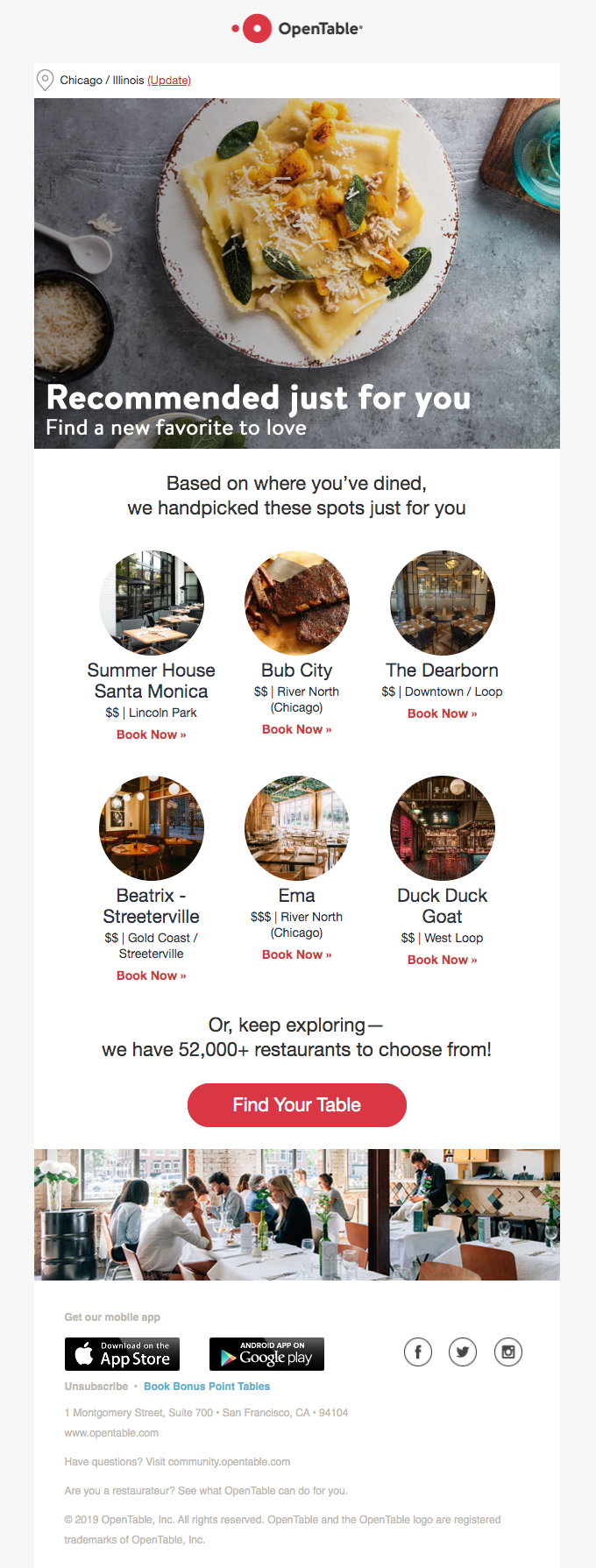

Both are direct emails with personalized recommendations based on the subscriber’s past dining or viewing history.
It’s also useful to define buyer personas for each direct email marketing campaign. Next, create a content library with templates and blocks for each persona or email type. This can be a big time-saver when you need to create personalized direct email campaigns quickly.
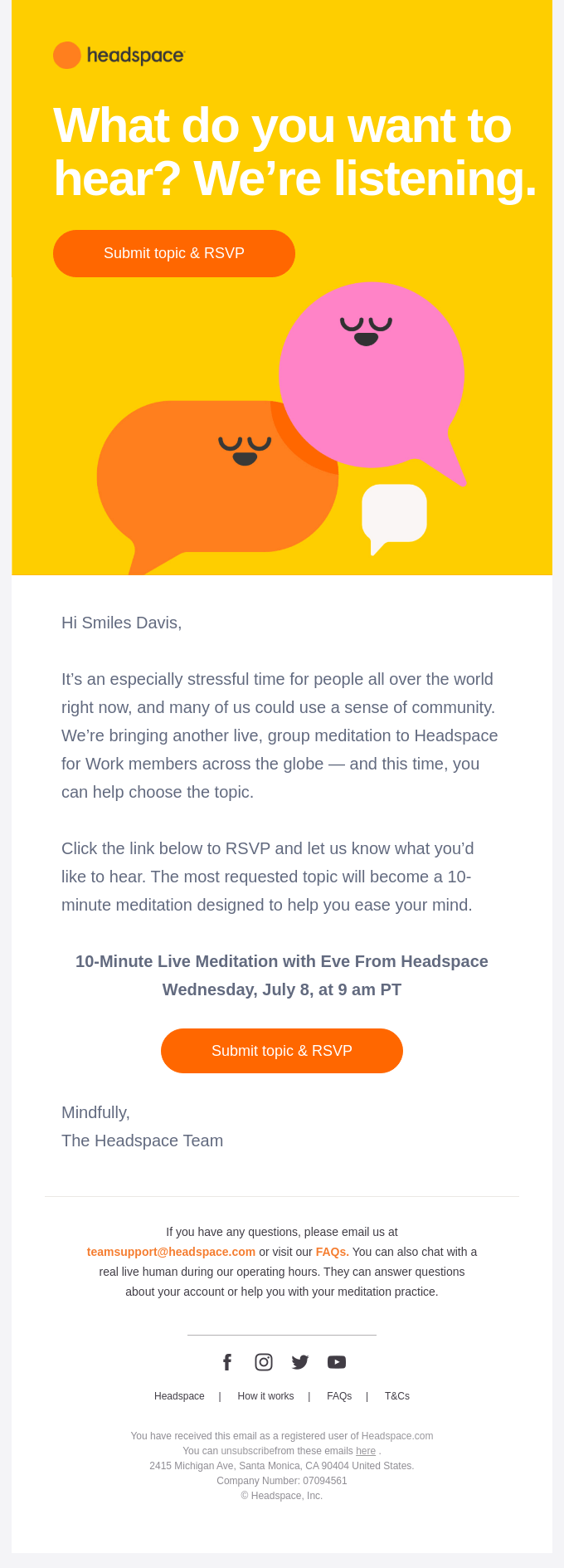
A simple “Hi First_Name” in the greeting goes a long way towards grabbing the subscriber’s attention. The first person “you” in the headline is also effective.
- Include special offers or promotions based on their demographics, e.g. location, gender, or age, or purchase history

- Create tailored content with a unique value proposition

- Send birthday or anniversary direct emails, ideally with an enticing offer
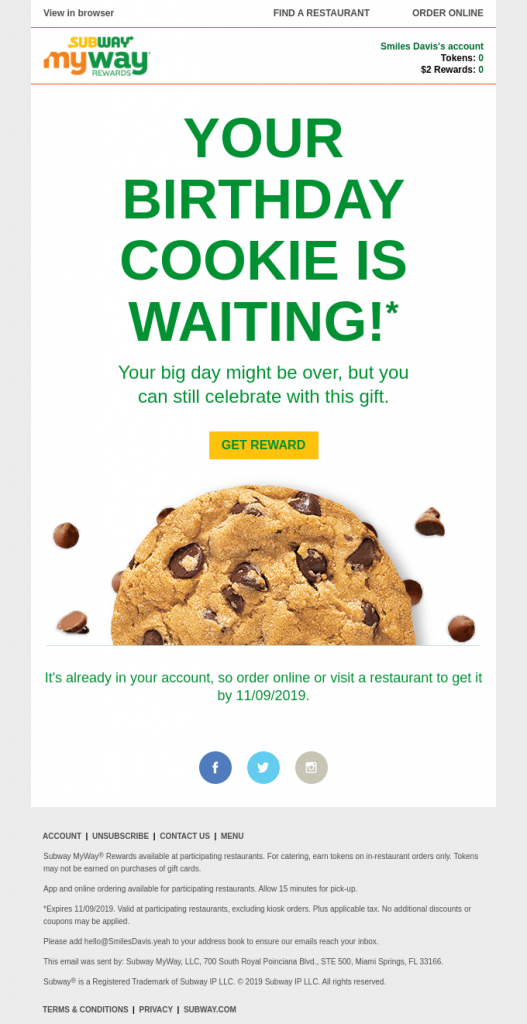
- Include dynamic content with unique subject lines, copy, images, CTAs or offers that adjust to personalize the email for each recipient
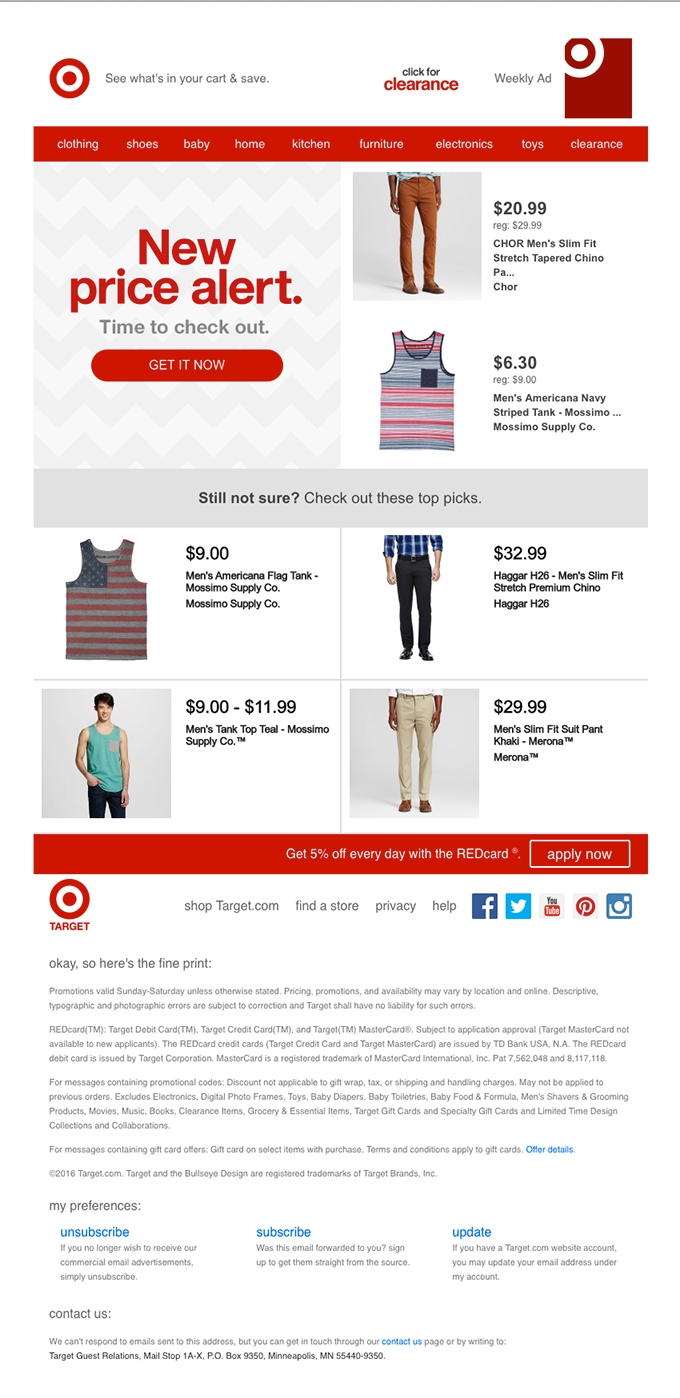
#3. Leverage the Power of Automation and Artificial Intelligence
Email automation will help you send personalized, relevant, and timely direct emails to all your subscribers at scale. By automating your email campaigns based on specific triggers or schedules, you can:
- Send campaigns out quickly
- Nurture leads and improve conversions
- Engage with more subscribers at scale
- Quickly review your campaigns and make adjustments to improve opens, click-throughs, engagements, and conversions
If you have already segmented your audience and created customer personas, automation is easy to do. You can automate the process for many types of direct emails, including:
- Welcome
- Unsubscribes
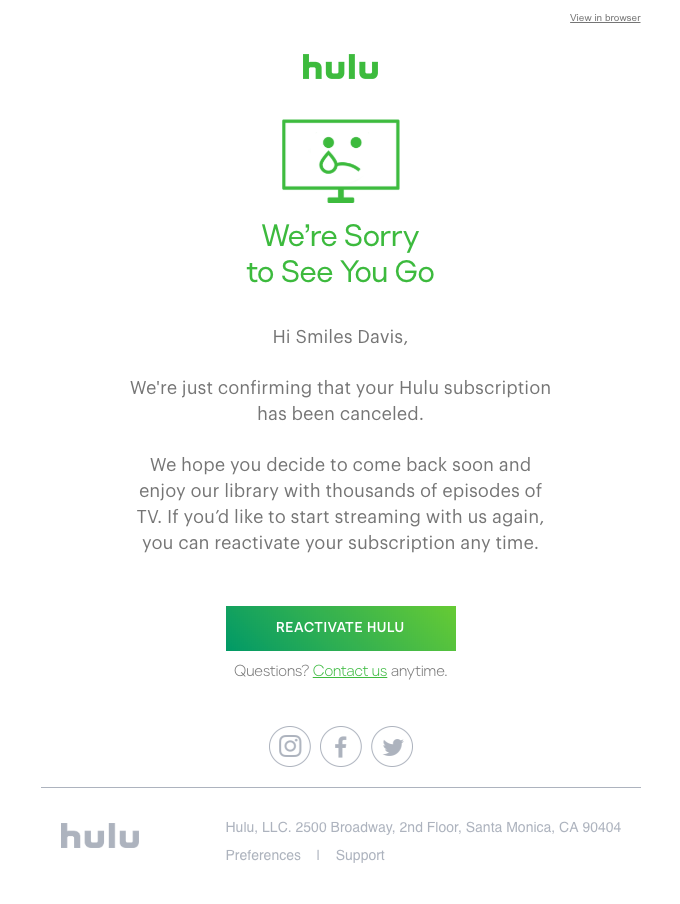
This simple email includes text that can be easily reused. It also includes personalization by addressing the subscriber directly.
- Cart or browse abandonment

- Event invites
- Product recommendations

- Newsletters

This newsletter includes simple graphics, a short introductory text about each course, a blog link and a link to the library subscription store – all of which are likely to be useful for recipients.
- Terms of service
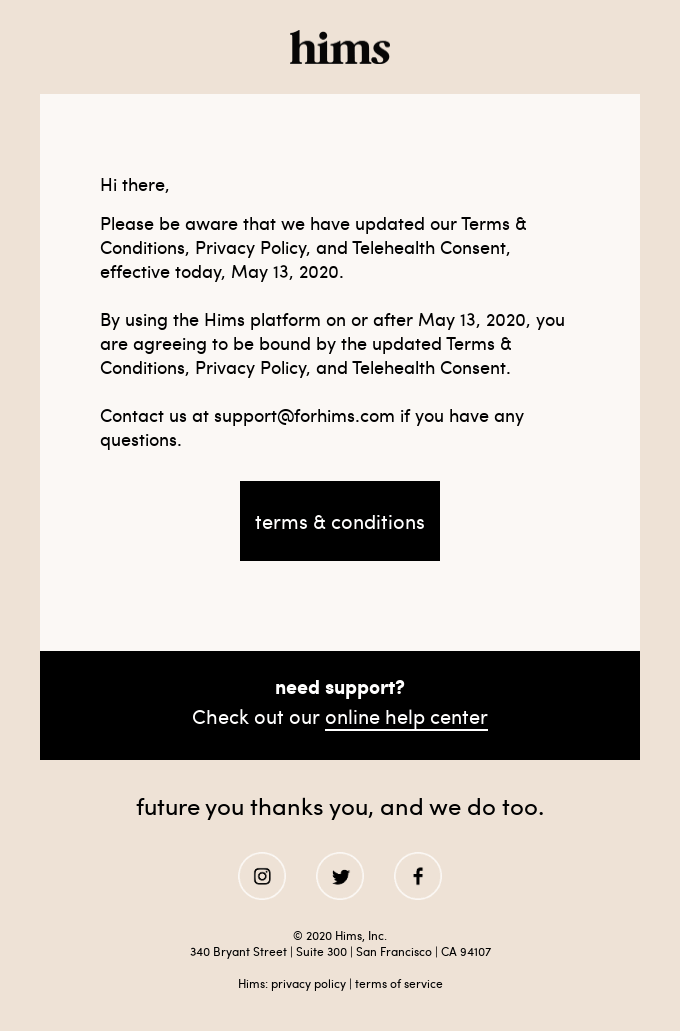
Some automation tips to get the most out of your direct email marketing campaigns:
- For each email type, create reusable, on-brand templates and content blocks in your ESP
- Optimize content for customer-centric keywords
- Optimize email timing and volume in your ESP
- Craft unique subject lines and headlines
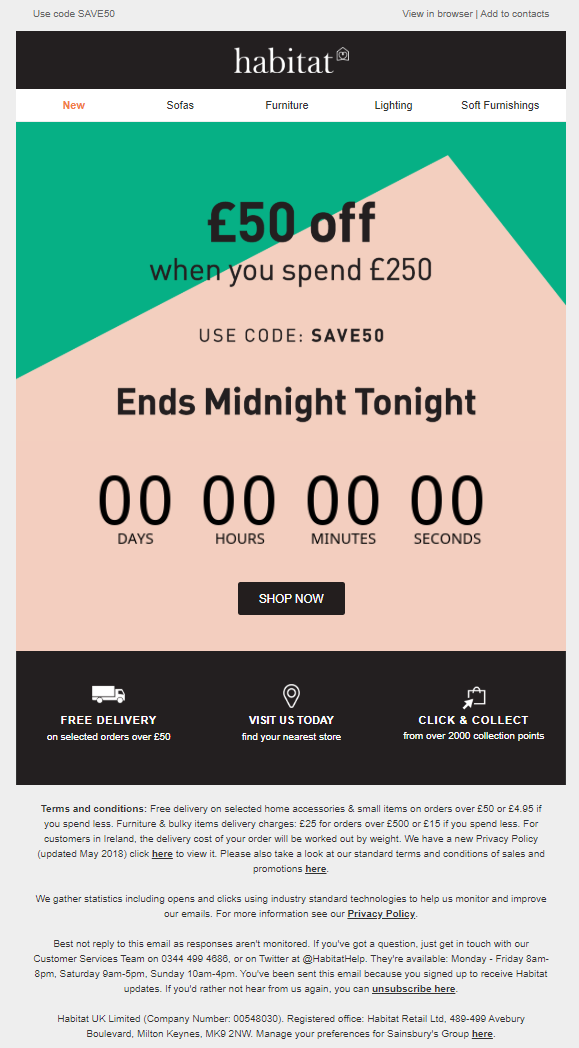
- Create specific, easy-to-understand CTAs with contrasting colors, simple fonts, and white space
Some ESPs also include some Artificial Intelligence (AI) capabilities to help you streamline your direct email marketing program. Take advantage of these features to:
- Collect customer preferences and improve email segmentation
- Map customer journeys
- Create hyper-personalized email content
- Analyze campaign performance, and use this information to initiate improvements
- Get subscriber insights (e.g. about engagement) to improve content quality and relevance
- Automate routine tasks so you can focus on improving results like conversions and sales
#4. Test, Test, Test!
It’s rarely a good idea to send out direct emails before testing them. It’s important to test every campaign before sending, and make adjustments early. Most ESPs provide A/B testing or multivariate testing to simplify this process.
In an A/B test, you set up different versions of a direct email, and send each version to a different set of recipients. Each set is a subset of your larger email subscriber list. Then track the performance of each version in the ESP. The version that generates the best results (e.g. maximum opens, most clicks, or fastest conversions) is the winning version. You can then send this version to your list.
What can you test in A/B testing?
- Subject lines
- Content
- Images
- CTA text or buttons
- Level of personalization
- From name (no-reply@abc.com versus john@abc.com)
- Offers
- Send times
In addition to testing direct emails before sends, you should also analyze emails after sends.
Measure the results of every direct email campaign regularly, or for as long as it’s running. Most ESPs provide comprehensive data (which you will need to set up) on important metrics like:
- Opens
- Clicks
- Spam complaints
- Bounces
- Number of unsubscribes
- Number of forwards
- Number of new subscribers generated by each forward
Review this data to find improvement opportunities for your direct email marketing strategy, list segmentation, design, copy, layout, send times, frequencies, etc.
Conclusion
Today’s consumers and customers are spoiled for choice. With so many brands vying for their attention, loyalty is at a premium. Direct email marketing is a highly effective way to win the battle for the customer’s inbox, nurture meaningful relationships with them, and garner their long-term loyalty and support. Plus, it’s cost-effective, highly scalable and easy to set up with an expert partner. The strategies described here work well for both B2C and B2B direct email marketing. We hope you found them useful!
Want to set up a direct email marketing program for your brand? Contact Email Uplers and we’ll get you going in no time!


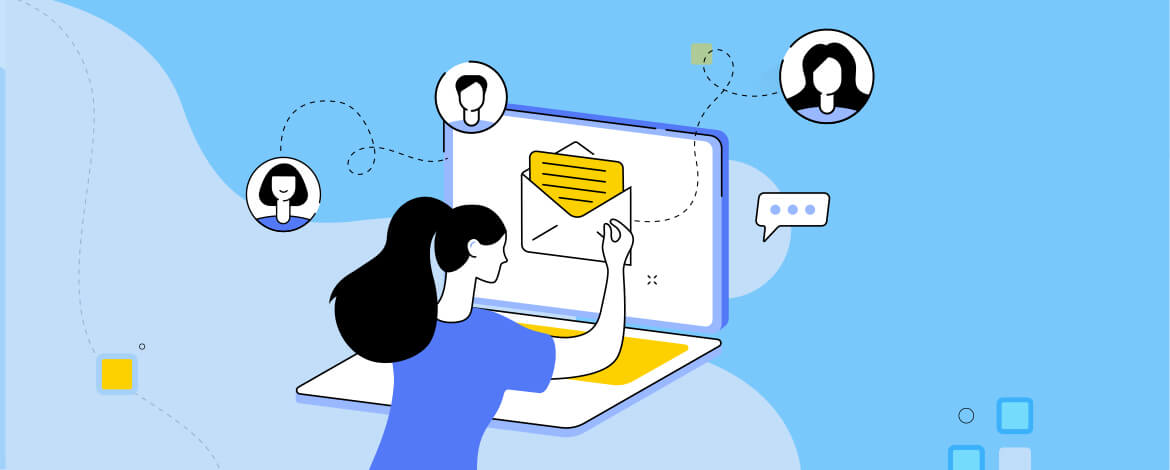


Kevin George
Latest posts by Kevin George (see all)
Expert Interview Series: Part 4
Beat the Challenges of Gmail Clipping